Eruption resumes at Kilauea volcano, Aviation Color Code raised to Red, Hawaii
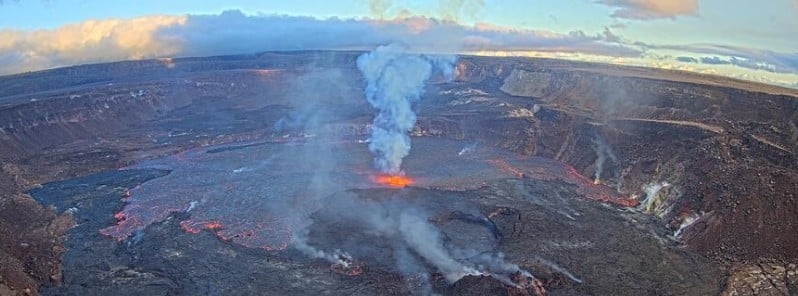
The eruption at Kīlauea volcano in Hawaii resumed at approximately 02:34 UTC on January 6, 2023, after nearly a month of pause.
At approximately 16:34 HST on January 5, 2023, the USGS Hawaiian Volcano Observatory (HVO) detected a glow in Kīlauea summit webcam images indicating that the eruption has resumed within Halemaʻumaʻu crater in Kīlauea’s summit caldera, within Hawai‘i Volcanoes National Park.
As a result, HVO has elevated Kīlauea’s volcano Alert Level from WATCH to WARNING and its Aviation Color Code from ORANGE to RED as this eruption and associated hazards are evaluated.
“The opening phases of eruptions are dynamic,” HVO volcanologists said.
“Webcam imagery shows fissures at the base of Halemaʻumaʻu crater generating lava flows on the surface of the crater floor. The activity is confined to Halemaʻumaʻu and the hazards will be reassessed as the eruption progresses.”
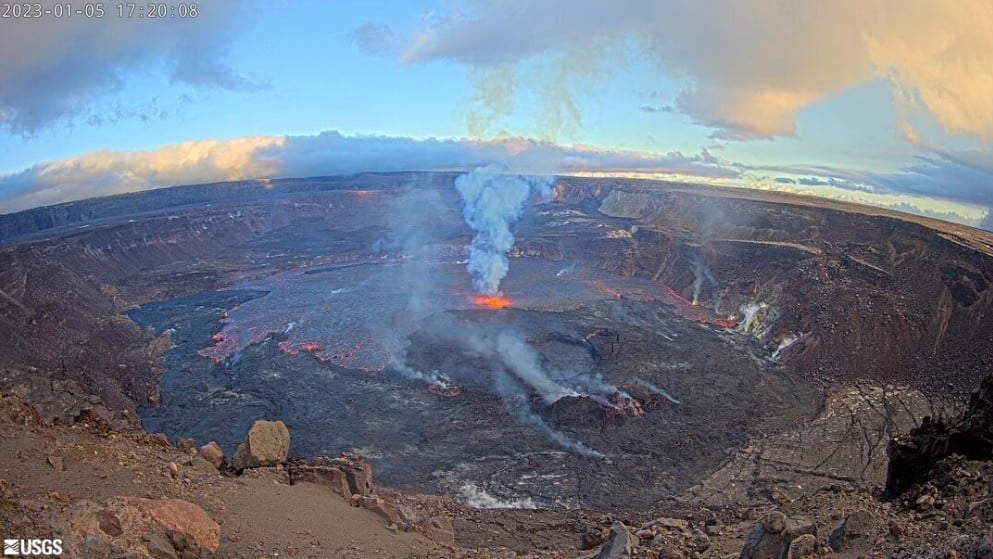
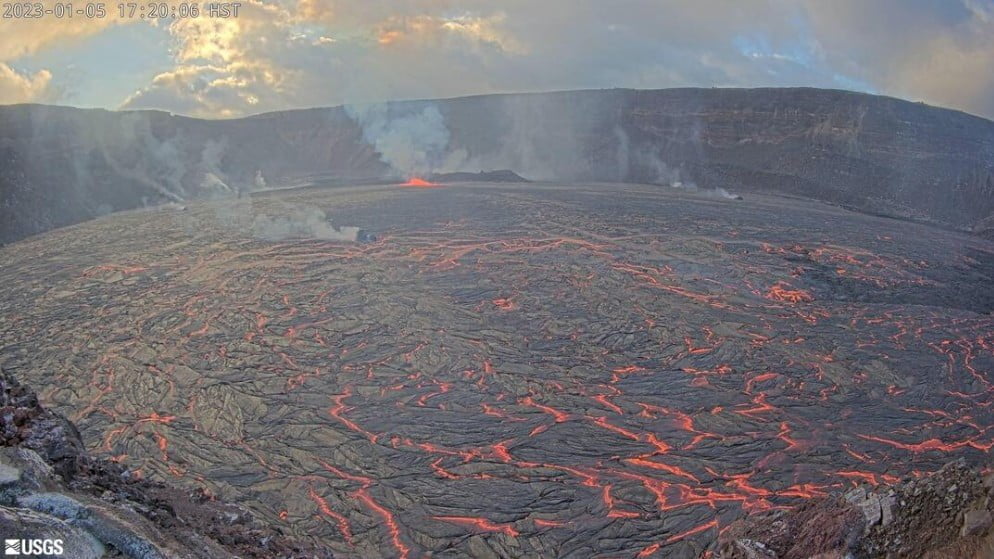
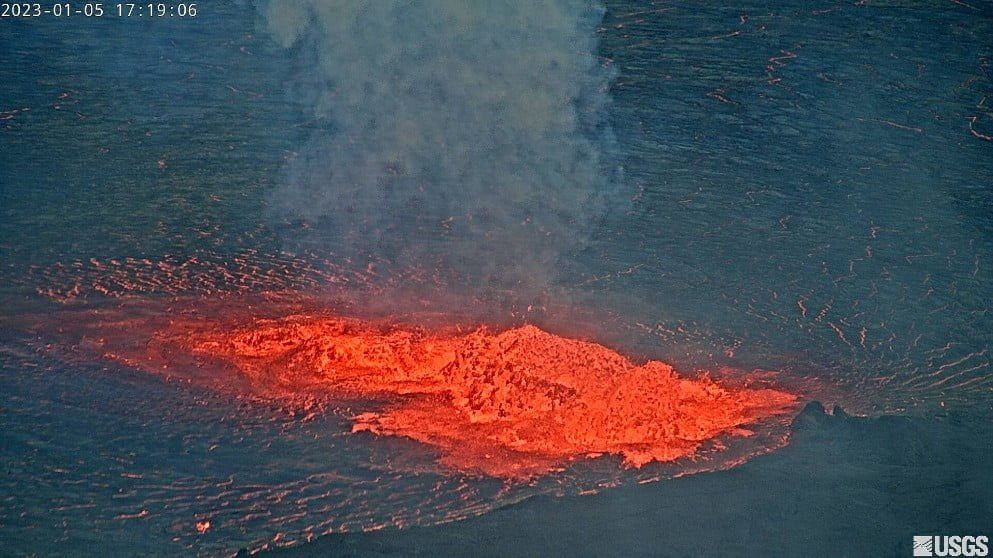
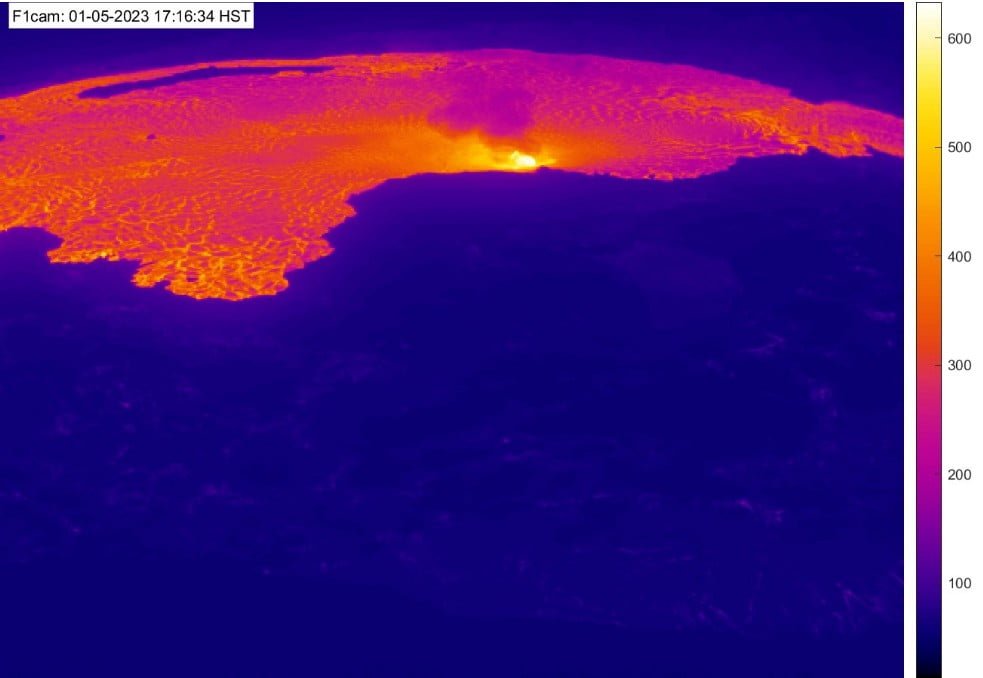
The eruption at Kilauea paused on December 13, 2022, coinciding with the end/pause of the eruption at Mauna Loa.
This eruptive phase at Kilauea volcano started on September 30, 2021 (VEI 0):
Geological summary
Kilauea volcano, which overlaps the east flank of the massive Mauna Loa shield volcano, has been Hawaii’s most active volcano during historical time.
Eruptions of Kilauea are prominent in Polynesian legends; written documentation extending back to only 1820 records frequent summit and flank lava flow eruptions that were interspersed with periods of long-term lava lake activity that lasted until 1924 at Halemaumau crater, within the summit caldera.
The 3 x 5 km (1.9 x 3.1 miles) caldera was formed in several stages about 1500 years ago and during the 18th century; eruptions have also originated from the lengthy East and SW rift zones, which extend to the sea on both sides of the volcano.
About 90% of the surface of the basaltic shield volcano is formed of lava flows less than about 1 100 years old; 70% of the volcano’s surface is younger than 600 years.
A long-term eruption from the East rift zone that began in 1983 has produced lava flows covering more than 100 km2 (37 mi2), destroying nearly 200 houses and adding new coastline to the island.2
References:
1 HVO/USGS Volcanic Activity Notice – Volcano: Kilauea (VNUM #332010) – January 6, 2023 at 02:35 UTC
2 Kilauea – Geological summary – GVP
Featured image credit: USGS/HVO

Commenting rules and guidelines
We value the thoughts and opinions of our readers and welcome healthy discussions on our website. In order to maintain a respectful and positive community, we ask that all commenters follow these rules.